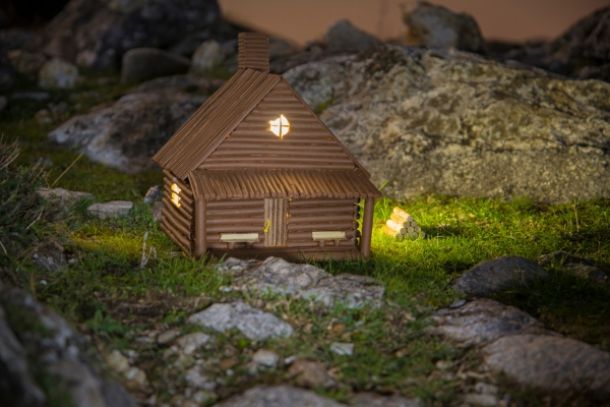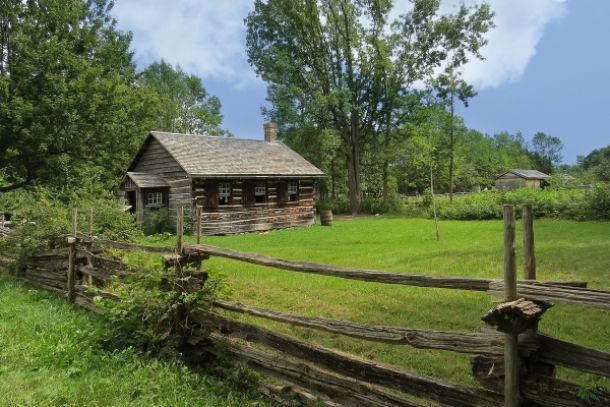Wooden Living: Constructing Your Eco-Friendly Home
Wooden Living: Constructing Your Eco-Friendly Home
In an era where sustainability is paramount, constructing an eco-friendly wooden home is a fulfilling way to merge environmental responsibility with modern living. “Wooden Living: Constructing Your Eco-Friendly Home” provides a detailed guide for DIY enthusiasts who want to build a house that is both green and stylish. This article covers sustainable material sourcing, energy-efficient design strategies, and eco-conscious construction practices to help you create a living space that is as kind to the planet as it is comfortable and inviting.
Introduction
Wooden homes naturally lend themselves to sustainability thanks to wood’s renewable properties and inherent insulation benefits. However, to build a truly eco-friendly home, every phase of the construction process must be approached with sustainability in mind—from choosing materials to designing for energy efficiency and reducing waste. This guide offers practical steps and innovative ideas for constructing a wooden home that minimizes its environmental impact while maximizing comfort and aesthetic appeal.
Sustainable Material Sourcing
Certified and Reclaimed Wood:
The cornerstone of any eco-friendly wooden home is the wood itself. Choose timber that is certified by organizations like the Forest Stewardship Council (FSC) to ensure responsible harvesting practices. Alternatively, reclaimed wood offers a sustainable option that reuses materials from older structures, adding a unique character and history to your home while reducing the demand for new timber.
Eco-Friendly Insulation and Finishes:
Incorporate insulation materials that are both effective and sustainable, such as recycled cellulose, natural wool, or cork. When it comes to finishes, opt for low-VOC (volatile organic compounds) stains, paints, and sealants that protect the wood without releasing harmful chemicals into your indoor environment. These eco-friendly options not only support a greener building process but also contribute to healthier living conditions.
Local Sourcing and Waste Reduction:
Whenever possible, source materials locally to minimize transportation emissions and support local businesses. Careful planning of material cuts and the recycling of offcuts can significantly reduce construction waste. These practices help lower the environmental footprint of your project while also potentially reducing costs.
Energy-Efficient Design Strategies
Passive Solar Design:
Design your home to take full advantage of natural light and heat. Position large, energy-efficient windows on the sun-facing side to capture passive solar energy during winter and use overhangs or shading devices to prevent overheating in summer. Incorporating thermal mass elements, like stone or concrete, can help moderate indoor temperatures by absorbing heat during the day and releasing it at night.
High-Performance Insulation and Airtight Construction:
Ensure that your building envelope is well-insulated and airtight. Combine natural insulation properties of wood with additional eco-friendly materials to reduce heat loss in winter and keep the home cool during summer. Proper sealing around windows, doors, and joints is essential for maximizing energy efficiency and preventing drafts.
Renewable Energy Integration:
Plan for the integration of renewable energy systems such as solar panels or small wind turbines. Solar panels can be discreetly installed on the roof or nearby ground-mounted systems to provide clean energy, reducing reliance on fossil fuels. Consider energy storage solutions, like battery systems, to optimize the use of renewable energy and ensure consistent power supply.
Eco-Conscious Construction Practices
Efficient Construction Methods:
Adopt construction techniques that minimize waste and reduce environmental impact. Prefabrication of certain components in a controlled environment can lead to precise measurements and reduced on-site waste. Modular construction methods enable you to build in phases, reducing resource use and allowing for future expansion if needed.
Water Management Systems:
Sustainable building also involves efficient water usage. Install rainwater harvesting systems to collect and store water for irrigation or non-potable uses, and consider greywater recycling systems to reduce overall water consumption. Low-flow fixtures in kitchens and bathrooms can further enhance your home’s sustainability by lowering water usage without compromising functionality.
Non-Toxic Practices:
Use non-toxic materials and environmentally responsible construction practices throughout your build. Avoid products that release harmful chemicals, and choose natural adhesives and sealants. Maintaining a clean, chemical-free work environment not only benefits your health but also aligns with your commitment to sustainability.
Interior Design for a Green Home
Natural and Recycled Materials:
Incorporate natural elements and recycled materials into your interior design. Reclaimed wood flooring, natural stone countertops, and eco-friendly fabrics can all contribute to a cohesive, green aesthetic. These materials not only look beautiful but also support a sustainable lifestyle.
Indoor Air Quality:
Enhance indoor air quality by using non-toxic paints and finishes, and ensure proper ventilation throughout your home. Consider installing a mechanical ventilation system with heat recovery to maintain fresh air while conserving energy. Plants and natural decor can also help purify the air and create a calming, nature-inspired environment.
Long-Term Sustainability and Maintenance
Routine Maintenance:
An eco-friendly wooden home requires ongoing care to maintain its efficiency and beauty. Establish a maintenance schedule that includes regular inspections for moisture, pest issues, and material wear. Timely resealing, cleaning, and minor repairs can prevent larger problems and extend the life of your home.
Future-Proofing Your Home:
Design your home to be adaptable to future advancements in green technology. Ensure that your systems—such as renewable energy installations and water management—can be upgraded or expanded as new innovations become available. This adaptability helps keep your home at the forefront of sustainable living over the long term.
Conclusion
“Wooden Living: Constructing Your Eco-Friendly Home” provides a roadmap for building a wooden house that harmonizes modern living with environmental responsibility. By choosing sustainable materials, designing for energy efficiency, and employing eco-conscious construction practices, you can create a home that not only meets your personal needs but also contributes positively to the planet. Embrace these strategies, and let your green building journey transform your living space into a sustainable sanctuary for the future.


